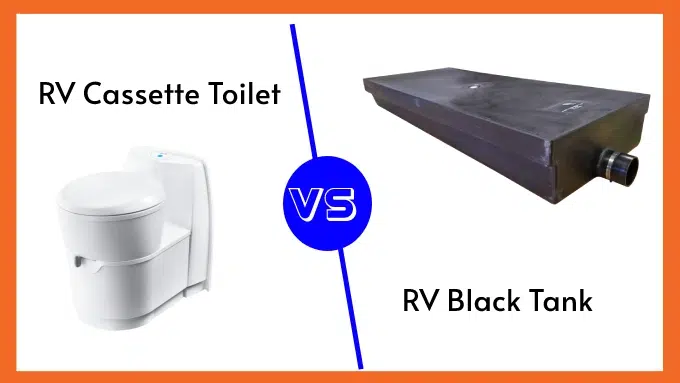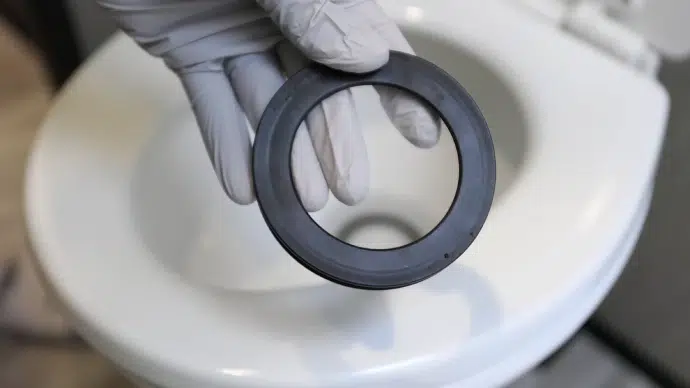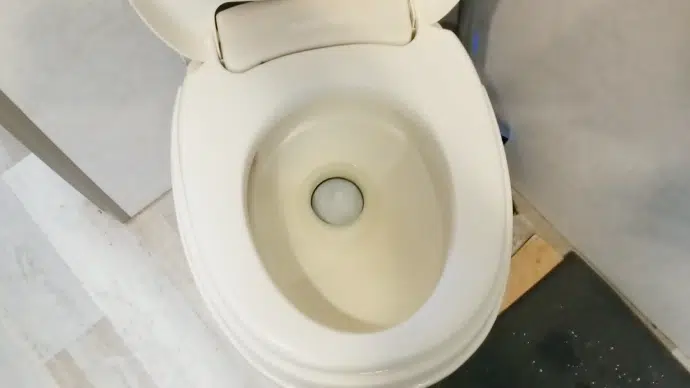Last Updated on April 7, 2023
Are you looking for a new RV or considering upgrading your current one? One of the most important decisions you’ll need to make is choosing between an RV cassette toilet or a traditional black tank system.
While both serve the same basic function, they differ significantly in convenience, maintenance, and cost. Black tanks are generally larger and hold more waste than RV cassette toilets, while Cassette toilets are easier to handle and better suited for solo travelers.
Let’s explore the pros and cons of reliable RV waste management options so you can decide which one is ideal for your recreational vehicle.
RV Cassette Toilet vs Black Tank: A Comprehensive Comparison
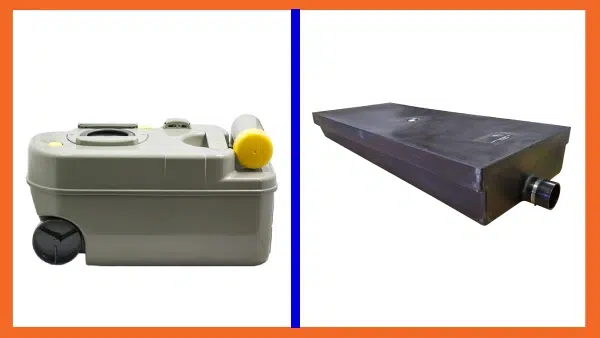
Two main options come to mind when choosing a toilet system for your RV: the RV cassette toilet and the black tank. Both have their pros and cons, so it’s important to understand the differences between them before making a decision.
1. Capacity:
The capacity of an RV Cassette Toilet is generally smaller than a Black Tank. This is because the cassette toilet is designed to be portable and easy to remove, so it can be emptied more frequently.
The capacity of a cassette toilet usually ranges from 2.5 to 5 gallons, whereas black tanks can hold up to 40 gallons or more.
The smaller capacity of an RV cassette toilet means that it will need to be emptied more frequently than a black tank. However, this also means handling and disposing of the waste is easier.
With an RV cassette toilet, you simply detach the holding tank and take it to a dump station or restroom for disposal. On the other hand, emptying a black tank requires connecting a hose and flushing out the waste through the sewer system.
2. Maintenance:
Compared to a traditional black tank system, maintenance of an RV cassette toilet is much easier and less time-consuming. Black tanks require more frequent dumping and may require additional steps such as flushing with water or adding chemicals to break down waste.
Depending on usage, the cassette tank should be emptied and cleaned after each use or at least once a week. To empty the tank, detach it from the toilet and take it to the nearest dump station or designated waste disposal area.
3. Convenience:
The convenience of an RV cassette toilet is that it can be easily removed from the RV for dumping. It is also lightweight and compact, making it easy to handle. Additionally, some models have a level indicator that lets you know when it’s time to empty the tank.
Conversely, a black tank requires you to find a dump station to empty it. This can be inconvenient in an area with no dump stations nearby. However, many RV parks and campgrounds have dump stations for their guests.
4. Ease of Use:
In terms of ease of use, an RV cassette toilet is simple to operate. You just need to add water and chemicals to the tank, use it as you would any other toilet, and then remove the cassette when it’s full. Dumping the contents is also relatively easy as long as you follow proper procedures.
A black tank can be more challenging to use, especially for beginners. It requires careful monitoring of water usage and chemical levels and regular maintenance to prevent clogs or odors. However, using a black tank becomes second nature once you get the hang of it.
5. Cost Comparison:
There are a few things to consider regarding the cost comparison between an RV cassette toilet and a black tank. The initial cost of an RV cassette toilet is typically higher than a black tank system. However, a cassette toilet can lower installation and maintenance costs.
A black tank system requires more complex plumbing and installation, which can increase the overall cost. They require regular pumping and cleaning, which can add up over time. On the other hand, an RV cassette toilet only requires emptying and cleaning the removable cassette.
Another factor to consider is the cost of replacement parts. Over time, black tanks may need repairs or replacements for valves, sensors, or other components.
These replacement parts can be costly and require professional installation. In contrast, RV cassette toilets have fewer components that may need replacing, making them easier and less expensive to maintain.
6. Environmental Impact:
RV Cassette Toilets and Black Tanks are both popular options for waste disposal in recreational vehicles. However, there are some significant differences regarding environmental impact between the two.
RV Cassette Toilets typically use less water than traditional flush toilets, making them a more environmentally-friendly option. Their self-contained design allows them to be easily removed from RVs, giving you more freedom regarding waste disposal.
Many campgrounds and RV parks have designated dump stations specifically for cassette toilet waste, which can be emptied into a standard sewage system or septic tank.
On the other hand, Black Tanks require a significant amount of water to flush waste out of the RV and into the tank. This can increase water usage and potentially contribute to environmental issues such as water scarcity or pollution.
Since Black Tanks are permanently installed in the RV, they cannot be easily removed or emptied at designated dump stations. Instead, they must be emptied at RV parks or other facilities with specialized dumping stations.
RV Cassette Toilet and Black Tank: Which One to Choose?
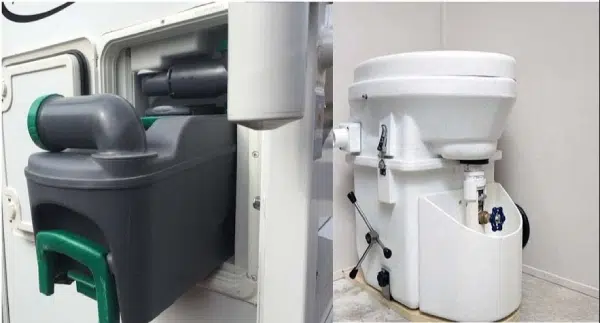
After considering all the factors, it’s time to decide which type of toilet system is best for your RV. Both RV cassette toilets and black tanks have their pros and cons, so it ultimately comes down to personal preference.
If you’re looking for a toilet that is easy to use and maintain, an RV cassette toilet may be the way to go. They are very convenient since they can be emptied at any dumping station or a regular household toilet. The compact size of the cassette tank also makes it easier to handle and store.
RV cassette toilets use fewer chemicals and water than black tanks, making them more eco-friendly. Compared to black tank toilets, RV cassette toilets may have a higher initial cost. But it can ultimately save money in the long run due to lower installation and maintenance costs.
On the other hand, if you plan on taking longer trips or traveling with more people, a black tank may be a better choice due to its larger capacity. Black tanks require less maintenance than cassette toilets but must be emptied at designated dumping stations.
Ultimately, deciding between an RV cassette toilet and a black tank depends on your specific needs and preferences. Consider convenience, ease of use, cost, and environmental impact before deciding.
How do you clean an rv cassette toilet?
When cleaning the cassette tank, it’s important to use appropriate cleaning products that won’t damage the seals or other components of the toilet. Many manufacturers offer specialized cleaning solutions for their toilets, but mild soap and water can also do the trick.
In addition to regular cleaning, inspect the seals and other components of the RV cassette toilet periodically to ensure they are in good condition. Any signs of wear or damage should be addressed promptly to prevent leaks.
How do you maintain a black tank?
Maintaining a Black Tank in your RV is essential to the camping experience. A Black Tank holds all the waste generated by the RV’s toilet system. As such, it requires regular maintenance to remain clean and functional.
One of the most important aspects of maintaining a Black Tank is ensuring that it remains free of clogs and blockages. This can be achieved by using special toilet paper designed for use in RVs and avoiding flushing any non-biodegradable materials down the toilet.
Regularly cleaning and emptying the tank is also crucial to its proper functioning. If you use your RV heavily, you should empty your Black Tank at least once every three days or more. When emptying the tank, wear gloves and follow proper sanitation procedures.
Another important aspect of maintaining a Black Tank is using specialized chemicals designed to break down waste and control odors. These chemicals are typically added directly to the tank through the toilet bowl after each use.
So, maintaining a Black Tank requires regular attention and care, but proper maintenance can provide reliable service.
Do cassette toilets smell?
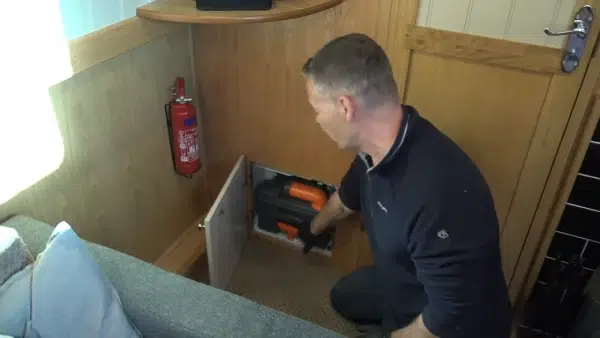
Cassette toilets can have a strong odor, especially when the ventilation system is inadequate. This is because of trapped odors that cannot escape outside and the accumulation of human waste in the tank.
To prevent this from happening, it’s important to keep up with regular maintenance and sanitation. Keeping the vents clean and clear will allow fresh air to circulate. Using an effective cleaning product can help reduce unpleasant odors.
Do you put toilet paper in a cassette toilet?
You should not flush toilet paper down a cassette toilet. These types of toilets typically have very small waste chambers designed for a specific type of waste disposal. Using standard-sized toilet paper in a cassette toilet can clog the chamber and cause blockages which can be difficult to clear.
If you cannot avoid using regular toilet paper, it is recommended that you use thinner varieties to minimize the risk of clogging or blocking the waste chamber.
Select the Right Toilet for Your RV
There are several factors to consider when choosing a black tank toilet or RV cassette toilet. The capacity and maintenance of both options should be considered, as well as convenience and ease of use. Cost comparisons and environmental impact are also important.
An RV cassette toilet is a portable option that is easy to maintain and has a smaller capacity. On the other hand, a black tank requires more maintenance but has a larger capacity. By comparing the pros and cons of each option, you can make an informed decision that fits your lifestyle and budget.

